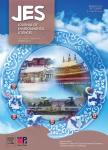Ciprofloxacin degradation in photo-Fenton and photo-catalytic processes: Degradation mechanisms and iron chelation
Ciprofloxacin degradation in photo-Fenton and photo-catalytic processes: Degradation mechanisms and iron chelation作者机构:Department of Chemical Engineering Indian Institute of Science Education and Research Bhopal Department of Chemical Engineering Indian Institute of Technology Guwahati
出 版 物:《Journal of Environmental Sciences》 (环境科学学报(英文版))
年 卷 期:2019年第31卷第6期
页 面:82-92页
核心收录:
学科分类:083002[工学-环境工程] 0830[工学-环境科学与工程(可授工学、理学、农学学位)] 08[工学]
基 金:supported by the Indian Institute of Guwahati (India) for providing the research fellowship to Mr. Ardhendu Sekhar Giri
主 题:Advanced oxidation processes Antibiotic decomposition Iron chelation Antimicrobial activity
摘 要:Ciprofloxacin(CIP)is a broad spectrum synthetic antibiotic drug of fluoroquinolones class.CIP can act as a bidentate ligand forming iron complexes during its degradation in the photoFenton process(PFP).This work investigates on PFP for the degradation of CIP to understand the formation mechanism and stability of iron complexes under ultraviolet(UV)-light illumination.A comparison was made with the UV-photocatalysis(UV/TiO_2)process where CIP doesn t form a complex.In PFP,the optimal dose of Fe^(2+)and H_2O_2were found to be 1.25 and10 mmol/L with pH of 3.5.An optimal TiO_2dose of 1.25 g/L was determined in the UV/TiO_2process.Maximum CIP removal and mineralization efficiency of 93.1%and 47.3%were obtained in PFP against 69.7%and 27.6%in the UV/TiO_2process.The mass spectra could identify seventeen intermediate products including iron-CIP complexes in PFP,and only seven intermediate products were found in the UV/TiO_2process with a majority of common products in both the processes.The proposed mechanism supported by the mass spectra bridged the routes of CIP cleavage in the PFP and UV/TiO_2process,and the decomposition pathway of Fe^(3+)-CIP chelate complexes in PFP was also elucidated.Both in PFP and UV/TiO_2processes,the target site of HO~·radical attack was the secondary-N atom present in the piperazine ring of the CIP molecule.The death of Escherichia coli bacteria was 55.7%and 66.8%in comparison to the control media after 45 min of treatment in PFP and UV/TiO_2process,respectively.



